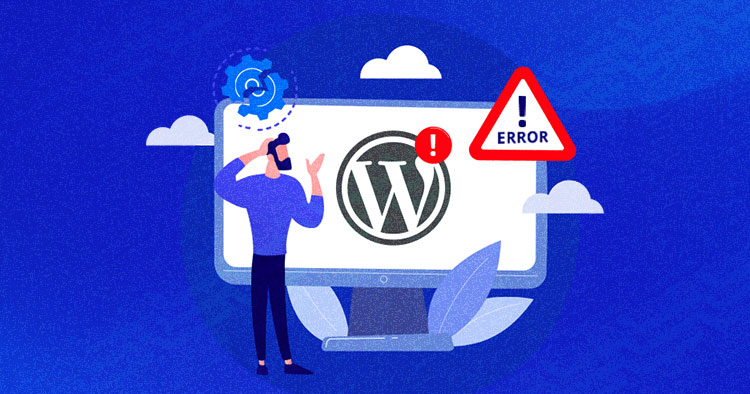Hello!
Welcome to the world of WordPress! In this post, we will delve into a crucial topic that every WordPress user, whether a beginner or a seasoned developer, should know. As a popular content management system, WordPress offers a flexible and user-friendly platform for building and managing websites.
However, with great power comes great responsibility. To ensure a smooth and secure WordPress experience, it’s essential to avoid common mistakes that can compromise your site’s performance, security, and overall user experience.
 One of the best ways to avoid these mistakes is to choose the security and peace of mind that comes with a managed WordPress hosting solution.
One of the best ways to avoid these mistakes is to choose the security and peace of mind that comes with a managed WordPress hosting solution.
With managed WordPress, you can rest assured that your site is in good hands, as experts handle the technical aspects, leaving you to focus on content creation and growth.
So, let’s dive in and explore the top 10 WordPress mistakes to avoid and how managed WordPress can help you avoid these common pitfalls. By the end of this article, you’ll be equipped with the knowledge to build a fast, secure, and user-friendly WordPress site that drives engagement and conversion.
10 Common WordPress Mistakes to Avoid Beginners Often Make
Let’s dive into the 10 common WordPress mistakes that beginners often make. Whether setting up your blog or managing a business website, avoiding these pitfalls will help you build a more secure, efficient, and user-friendly WordPress site. Let’s explore each of these missteps and learn how to steer clear of them!
Mistake 1: Using Poorly-Coded Themes
 When choosing a theme, it’s essential to evaluate its code quality. Poorly-coded themes can harm your SEO efforts and lead to rendering issues.
When choosing a theme, it’s essential to evaluate its code quality. Poorly-coded themes can harm your SEO efforts and lead to rendering issues.
Look for themes that follow HTML validation, minimize excessive HTTP requests, and optimize DOM size for optimal performance. You can use tools like W3C Validator and GTmetrix to test theme performance.
Mistake 2: Using Page Builders Excessively
Page builders like Elementor, Beaver Builder, and Divi offer convenience, but excessive reliance on them can bloat your site and slow down loading times. Use them judiciously and consider their impact on performance. Optimize page builder usage by minimizing unnecessary elements, using caching plugins, and leveraging browser caching.
Mistake 3: Installing Too Many Plugins
Plugins enhance functionality, but an overload can lead to conflicts, security vulnerabilities, and performance issues. Prioritize essential plugins and regularly review their necessity. Use plugins like Plugin Performance Profiler to identify performance-hungry plugins and consider alternatives.
Mistake 4: Neglecting Media Optimization
 Large images and videos can significantly slow down your site. Optimize media files by compressing images using tools like TinyPNG and ShortPixel and formats like WebP. Consider lazy loading for smoother user experiences. Use plugins like Lazy Load by WP Rocket to optimize media loading.
Large images and videos can significantly slow down your site. Optimize media files by compressing images using tools like TinyPNG and ShortPixel and formats like WebP. Consider lazy loading for smoother user experiences. Use plugins like Lazy Load by WP Rocket to optimize media loading.
Mistake 5: Omitting an XML Sitemap
An XML sitemap helps search engines understand your site’s structure. Install a reliable plugin like Yoast SEO or Rank Math to generate and submit your sitemap to search engines. This improves crawlability and indexing, enhancing your site’s visibility.
Mistake 6: Skipping Updates
Regularly update WordPress core, themes, and plugins. Updates often include security patches and bug fixes. Ignoring updates can leave your site vulnerable to attacks and errors. Use plugins like UpdraftPlus to automate backups before updating.
Mistake 7: Overlooking Security Measures
 Implement robust security practices. Use strong passwords, enable two-factor authentication (2FA) using plugins like Google Authenticator, and install security plugins like Wordfence or MalCare. Regularly scan for malware and vulnerabilities using plugins like Sucuri Security.
Implement robust security practices. Use strong passwords, enable two-factor authentication (2FA) using plugins like Google Authenticator, and install security plugins like Wordfence or MalCare. Regularly scan for malware and vulnerabilities using plugins like Sucuri Security.
Mistake 8: Not Setting up Backups
Back up your site regularly to prevent data loss due to hacks, server failures, or accidental deletions. Use reliable backup plugins like UpdraftPlus, BackWPup, or Duplicator, and store backups offsite using services like Google Drive or Dropbox.
Mistake 9: Ignoring Mobile Responsiveness
Mobile traffic is significant. Ensure your site is responsive and displays well on various devices. Test mobile layouts using tools like Google’s Mobile-Friendly Test and optimize for mobile users by using responsive themes and plugins like WP Mobile Detector.
Mistake 10: Ignoring User Experience (UX)
 Prioritize user-friendly design, intuitive navigation, and fast load times. A positive UX encourages visitors to stay and engage with your content. Use plugins like WP Rocket or W3 Total Cache to optimize performance, and consider user feedback to improve your site’s UX.
Prioritize user-friendly design, intuitive navigation, and fast load times. A positive UX encourages visitors to stay and engage with your content. Use plugins like WP Rocket or W3 Total Cache to optimize performance, and consider user feedback to improve your site’s UX.
By steering clear of these common mistakes, you’re not just avoiding potential issues-you’re setting yourself up for success.
You’re ensuring a secure, fast, and user-friendly WordPress site that’s not just functional, but also attractive and engaging to your target audience. So, let’s get started on this journey towards a better WordPress experience.
Conclusion
Congratulations! You’ve made it to the end of our journey through the top 10 WordPress mistakes to avoid. By now, you know how to steer clear of common pitfalls and build a fast, secure, and user-friendly WordPress site.
Remember, WordPress is a powerful tool, but it requires some know-how to get the most out of it. By avoiding these mistakes, you’ll be well on your way to creating a website that attracts and engages your target audience.
 Whether you’re a beginner or a seasoned developer, staying motivated and learning is crucial. WordPress is constantly evolving, and new mistakes to avoid are popping up all the time.
Whether you’re a beginner or a seasoned developer, staying motivated and learning is crucial. WordPress is constantly evolving, and new mistakes to avoid are popping up all the time.
By staying engaged and adapting to these changes, you can continue to build and maintain a successful WordPress site.
So, keep this guide handy and refer back to it whenever you need a refresher. And don’t forget to share it with your friends and colleagues who might be struggling with their WordPress sites.
Thanks for joining us on this journey, and happy WordPressing!
Thank you!
Join us on social networks!
See you!






